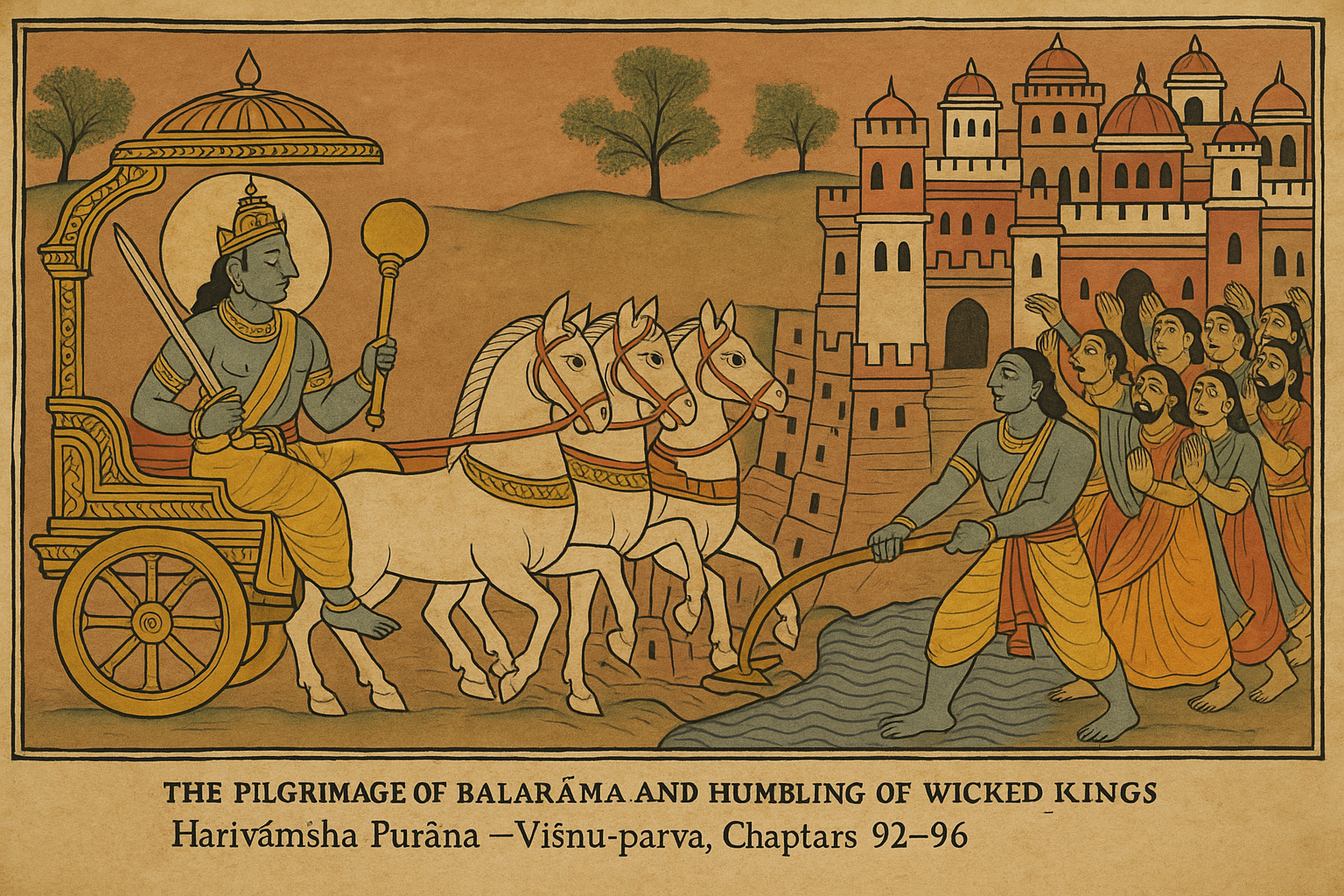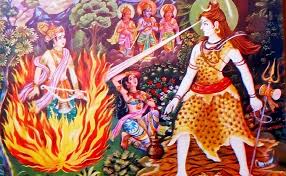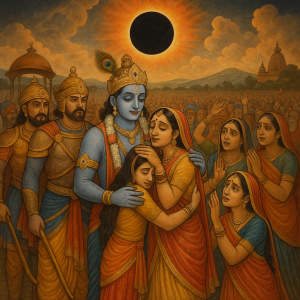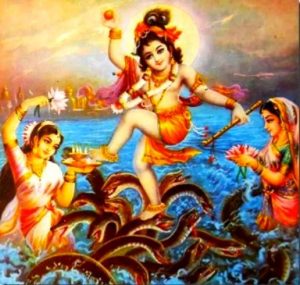Balarāma’s Resolve to Go on Pilgrimage
Once, during a time of great unrest and political tension, Lord Balarāma, the elder brother of Śrī Kṛṣṇa, decided to withdraw from palace affairs and undertake a sacred tīrtha-yātrā (pilgrimage).
Seeing how kings and warriors had become arrogant, Balarāma, known for His strength and spiritual wisdom, wanted to teach the world the value of dharma and penance by His personal example.
Thus, seated upon His chariot drawn by white horses, carrying His plough (hala) and mace (gadā), Lord Balarāma departed from Dvārakā to visit holy places throughout Bhārata-varṣa.
Balarāma Visits the Sacred Rivers
Balarāma’s journey took Him to many sacred rivers and tīrthas:
- Prayāga, where Gaṅgā and Yamunā meet, where He bathed and performed yajña.
- Sarayū, Gomatī, and Gāndakī, whose waters cleansed all sins.
- He honored Naimiṣāraṇya, the forest of sages, and the ashramas of great ṛṣis, where He was welcomed with reverence.
- Gaṅgā’s banks, where He gave cows and gold to brāhmaṇas.
At each place, Balarāma gave charity, listened to the recitation of the Vedas, and set an example of humility despite His divine might.
The Wickedness of the Kurus
Meanwhile, back in Hastināpura, the Kauravas, especially Duryodhana and his brothers, had grown in pride. They disregarded dharma and mocked the power of the Yādavas, especially of the saintly Balarāma.
News reached Balarāma during His pilgrimage that the Kurus were speaking ill of Him. Though detached, Balarāma decided to visit Hastināpura on His return to restore balance and give a lesson in humility.
Balarāma Humbles the City of Hastināpura
When Balarāma arrived at the capital, He was not welcomed with the honor due to Him. Instead, the Kauravas showed only shallow respect, hiding their envy.
Realizing their offense, Balarāma became divinely angry.
Standing on the banks of the Yamunā, He took up His plough and began to pull the entire city of Hastināpura toward the river, shaking its foundations.
“Let these arrogant kings know that power belongs only to the Supreme Lord,” He thundered.
The earth quaked. Buildings trembled. The citizens screamed in fear.
Terrified, the Kauravas ran to Balarāma, falling at His feet, begging for forgiveness.
“O Lord! We were blind with pride. Please forgive us! Spare the city!”
Moved by their submission, Balarāma calmed His anger and restored the city to its place.
“Let this be a lesson to all kings: Respect dharma, and never insult a devotee of the Lord.”
Return to Dvārakā
Having completed His pilgrimage and restored righteousness, Balarāma returned to Dvārakā, where He was welcomed with joy and reverence.
His pilgrimage became famous across Bhārata as a model of power tempered with wisdom, strength balanced with humility, and justice guided by compassion.
Lessons to Be Learned:
- Pilgrimage is purifying not just for the body, but for the mind and ego.
- Even the most powerful beings serve dharma by example.
- Offending a devotee or a saintly person invites danger—pride leads to downfall.
- Balarāma, though the embodiment of strength, never uses His power unjustly.
- When wickedness grows in the world, the Lord teaches through both love and correction.
Origin of the Story: Harivaṁśa Purāṇa – Viṣṇu-parva, Chapters 92–96



